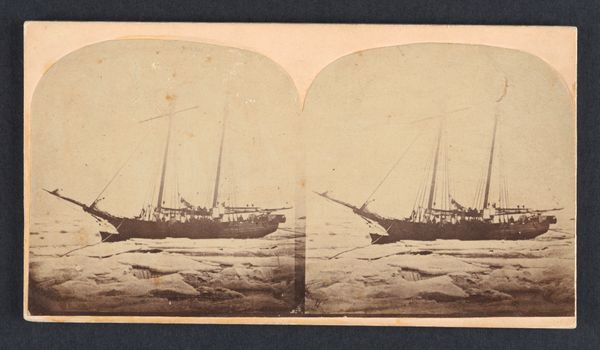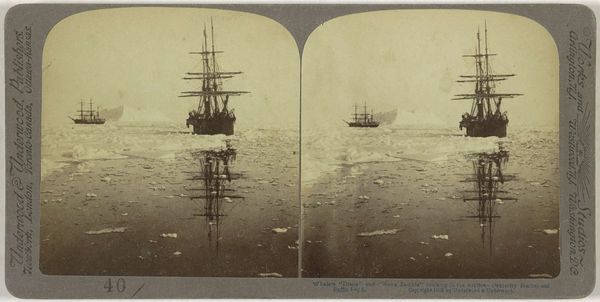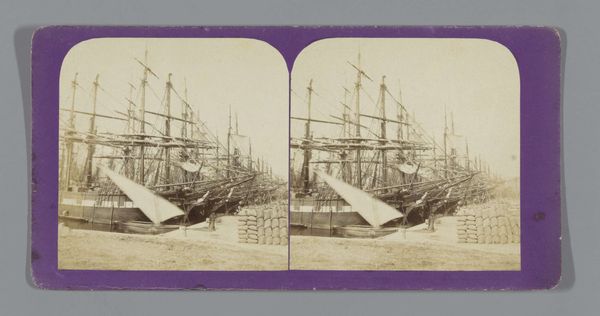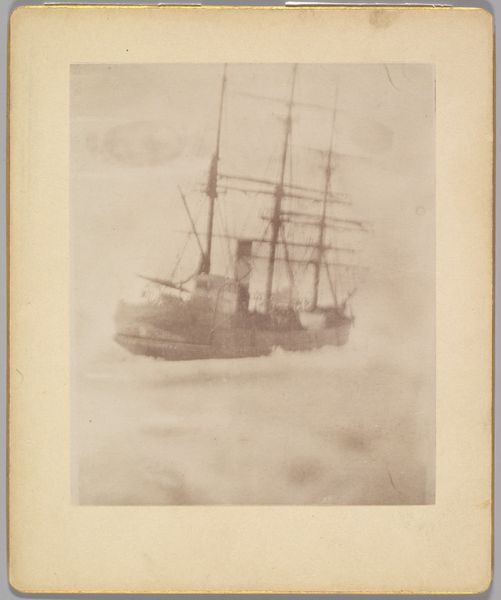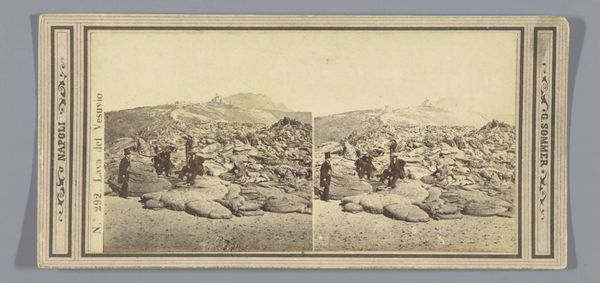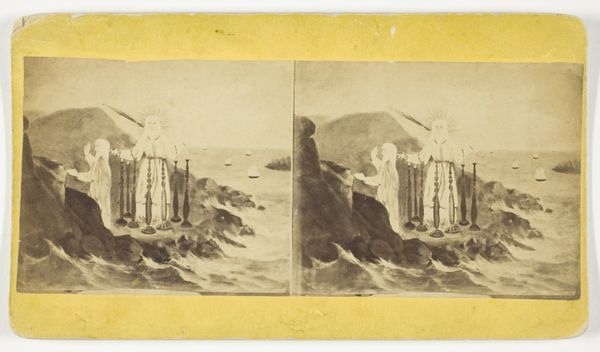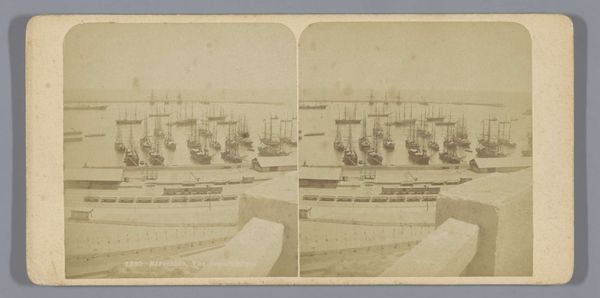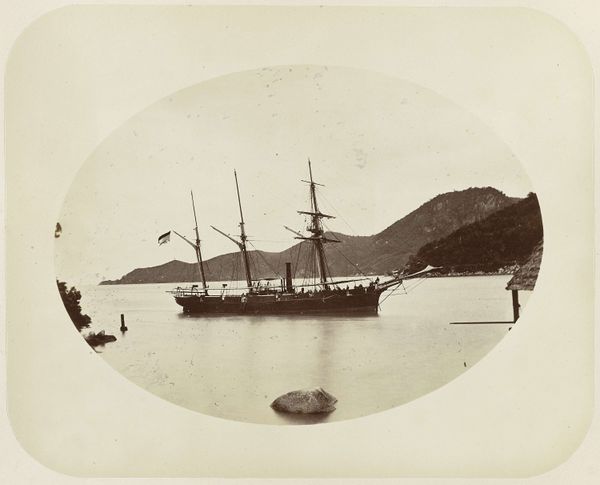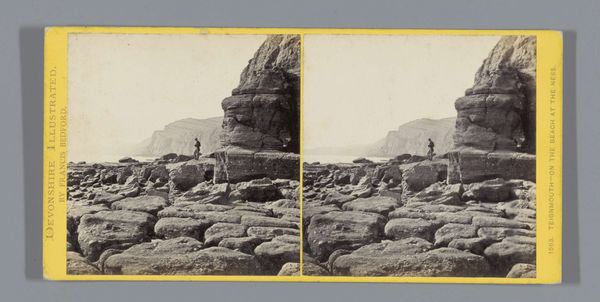
Copyright: Public Domain
Curator: Brrrr, just looking at it makes me shiver! The sheer bleakness of this vista…it's strangely captivating. Editor: That’s "Scène de la mer glacial" – "Scene of the Glacial Sea". It was captured by Isaac Israel Hayes sometime between 1857 and 1861. It’s a gelatin silver print, currently residing here at the Metropolitan Museum of Art. Curator: Gelatin silver print... so, photography attempting to capture the sublime. You know, that ship, stranded amidst what appears to be a gathering of... seals? It evokes a sense of isolation that just sinks in. Editor: Absolutely. The ship as symbol—of human ambition, perhaps, stuck fast in the unforgiving grip of nature. And those seals… They become potent symbols too, emblems of arctic resilience and raw, indifferent survival. Curator: They do rather own the place, don't they? I keep wondering about the diminutive figure near them, looking as though he is hunting them. Editor: Hayes wasn’t just making pretty pictures of frozen wonderlands. His explorations and photography served a crucial scientific purpose – documenting previously unseen territories and, in turn, feeding the world’s imagination about the arctic unknown. Curator: It also strikes me as somewhat melancholic. This stillness, this near-monochrome palette... it echoes that inherent tension in Romanticism. It is beauty intertwined with potential destruction. Editor: Yes, exactly, like visual foreshadowing—hinting towards our modern concerns of environmental impact, a prescient glimpse of fragile, icy environments on the brink. These icy landscapes take on the gravitas of our current ecological anxieties. Curator: Gosh, yes. A lot of food for thought embedded in a seemingly simple landscape shot. I suppose those quiet voices often scream the loudest. Editor: Precisely. A photograph quietly whispering volumes about time, endurance, and our precarious place within the natural world.
Comments
No comments
Be the first to comment and join the conversation on the ultimate creative platform.
